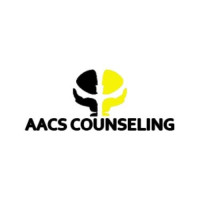What Happens After a SAP Evaluation?

If you’ve undergone a Substance Abuse Professional (SAP) evaluation, you’re likely wondering, what happens next? Whether you’re an employee trying to return to duty after a violation or simply seeking clarity, understanding the steps that follow this evaluation is critical.
This blog will break down what happens after a SAP evaluation, covering everything from treatment plans to follow-up testing and the return-to-duty process. Let’s walk through the key steps together.
Understanding the SAP Recommendation
After your SAP Evaluation, the next step is understanding the recommendations provided by the Substance Abuse Professional. During the evaluation, the SAP assesses your specific situation, including the nature of your substance use or violation. Based on this, they create a tailored plan to help you get back on track.
The recommendation you receive will typically include one or more of the following:
Education programs (drug and alcohol awareness courses)
Therapy or counseling (individual or group sessions)
Outpatient rehabilitation programs
Intensive inpatient treatment (in severe cases)
Your SAP will explain why they’ve recommended these steps and how completing them will help you achieve compliance. This plan is designed not only to meet workplace regulations but also to support your long-term well-being.
Entering a Treatment or Educational Program
Once you’ve reviewed the SAP’s recommendations, the next step is to begin the prescribed program. This will either be a treatment program for substance use or an education course focused on substance awareness, depending on your specific circumstances.
Here’s how this typically works:
Finding a Provider: The SAP may suggest specific, qualified treatment providers, but you’re responsible for enrolling in and attending the recommended program.
Program Duration: The length and intensity of the program depend on your evaluation results. Some educational courses may take only a few hours, while treatment programs could last weeks or months.
Focus: Education programs aim to help you understand the risks and consequences of substance misuse. Treatment plans often focus on behavioral therapies, coping strategies, and building lasting changes.
It’s important to take this step seriously. Your SAP will need a formal report indicating your participation and successful completion of the program before moving you forward in the return-to-duty process.
SAP Follow-Up Evaluation
Once you’ve completed the recommended program, you’ll meet with your SAP for a follow-up evaluation. This session is crucial and determines whether you’ve satisfied the treatment or education requirements.
During this session, the SAP will:
Review documentation from your treatment provider.
Assess your progress and readiness to move forward.
Provide a written report confirming your compliance.
If you’ve met the requirements, the SAP will issue a “notice of successful completion.” However, failing to complete the prescribed program may result in delays or further steps before advancing.
Compliance and Follow-Up Testing
After receiving clearance from the SAP, the next phase is compliance monitoring. This is particularly important if you’re a Department of Transportation (DOT)-regulated employee who violated drug or alcohol testing policies. Employers rely on a combination of follow-up testing and monitoring to ensure that employees remain substance-free.
What Follow-Up Testing Entails:
Frequency: Follow-up testing is conducted at unannounced times, as directed by your SAP. This is often in addition to standard company or DOT testing requirements.
Duration: Your SAP may recommend testing for up to five years, though the exact schedule often decreases in frequency over time.
Random Scheduling: Follow-up tests can feel unpredictable. This helps to ensure long-term compliance.
It’s worth noting that failing any follow-up test can result in further disciplinary action or additional SAP interventions.
Returning to Duty (If Applicable)
For employees covered by DOT regulations (like truck drivers, pilots, or railroad workers), the final step is the official return-to-duty process. This involves:
Submitting to a return-to-duty test, overseen by certified professionals. This test must be negative for drugs or alcohol.
Obtaining your employer’s clearance to resume safety-sensitive duties.
Keep in mind that employers may impose stricter requirements beyond what is federally mandated, and meeting those expectations is equally important.
For non-DOT-regulated employees, the return-to-work process may vary depending on company policies. However, completing all SAP requirements typically helps pave the way for reinstatement.
Continued Focus on Recovery
Completing the SAP Evaluation process doesn’t mean the journey is over. It’s an opportunity to build a new, healthier path forward, whether that’s through ongoing counseling, support groups, or simply maintaining what you’ve learned.
Ongoing steps to consider:
Support Networks: Consider joining groups like Alcoholics Anonymous (AA) or similar resources that offer accountability and encouragement.
Counseling: Individual sessions can help you maintain clarity and reinforce coping mechanisms.
Lifestyle Changes: Prioritize habits that promote health and reduce stress, such as exercising, improving nutrition, and strengthening personal relationships.
Continuing these practices can help ensure long-term success after completing your SAP process.
Final Thoughts
While a SAP evaluation is a serious step, it’s also an opportunity to reclaim control and work toward long-term success. The process may seem overwhelming at first, but breaking it into smaller steps can make it more manageable. A key takeaway? Compliance and follow-through are critical. By working closely with your SAP and fulfilling all requirements, you position yourself for personal and professional recovery.
If you’re navigating this process, remember this is about more than just meeting regulations. It’s a chance to address challenges, move forward, and build a healthier future. Stay focused, seek support when needed, and take this opportunity to grow.
Next Steps for You
If you’re currently navigating the SAP evaluation process, here’s what to do next:
Contact your SAP to clarify any questions about your next steps.
Identify a treatment provider and enroll in the recommended program.
Stay compliant with all education, treatment, and testing requirements along the way.
The road to recovery and reinstatement starts here, and with commitment, success is entirely within reach.
Note: IndiBlogHub features both user-submitted and editorial content. We do not verify third-party contributions. Read our Disclaimer and Privacy Policyfor details.







